Are you looking for a medical receptionist job? If so, you’ll need to create an impressive resume to help you land the position. A good summary is one of the first things hiring managers to see when reviewing applicants, which means it needs to be perfect. Unfortunately, seekers struggle to create an effective resume when seeking employment in a specific industry. Fortunately, with just a tiny amount of research and preparation, you can create a great resume as a medical receptionist. Also, check out our article on How To Get A Job In Any Industry for some more relevant tips for any job search. This article will explore different examples of resumes as entry-level medical receptionists and explain the importance of tailoring your resume to each unique opportunity.
Medical Receptionist Resume Example
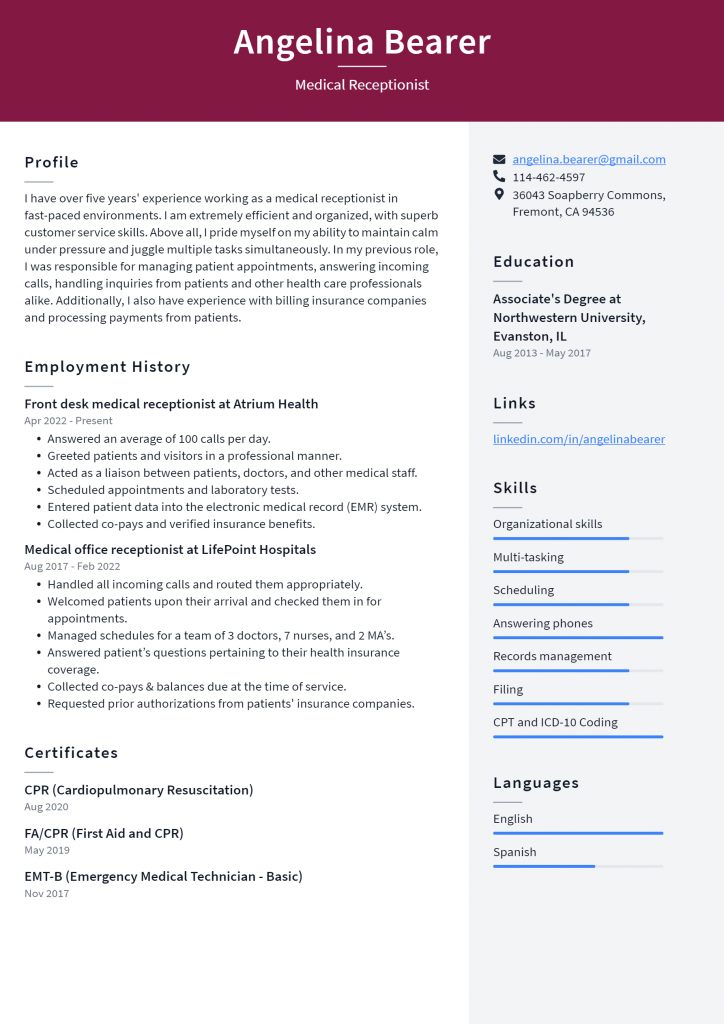
Download This Medical Receptionist Resume as PDF
Medical Secretary Resume Example
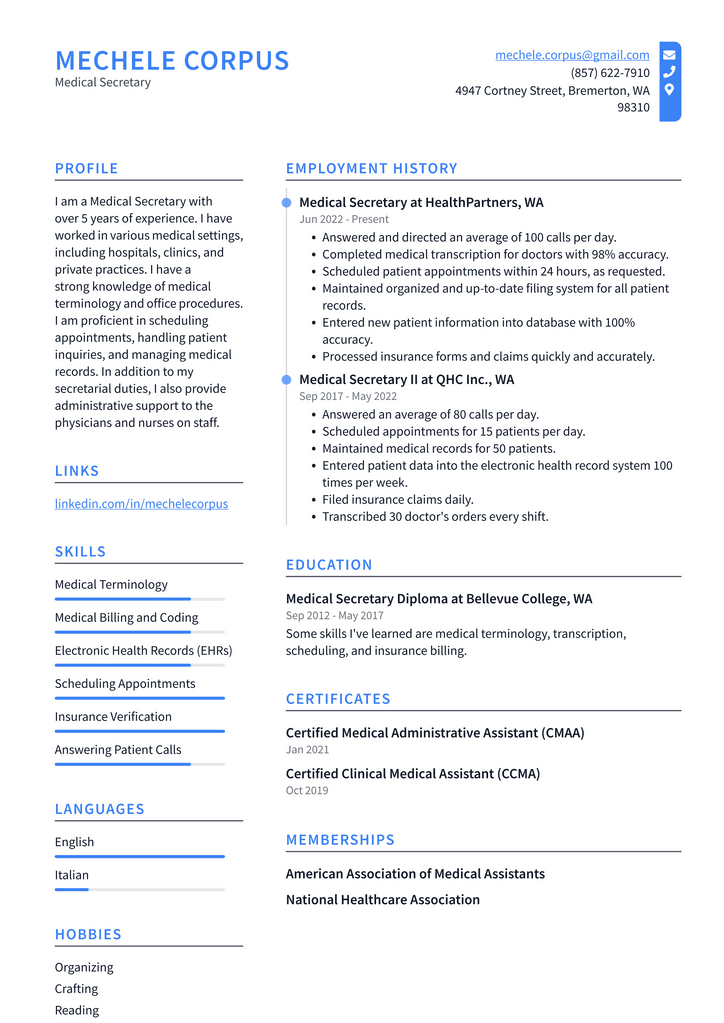
Download This Medical Secretary Resume as PDF
Medical Biller Resume Example
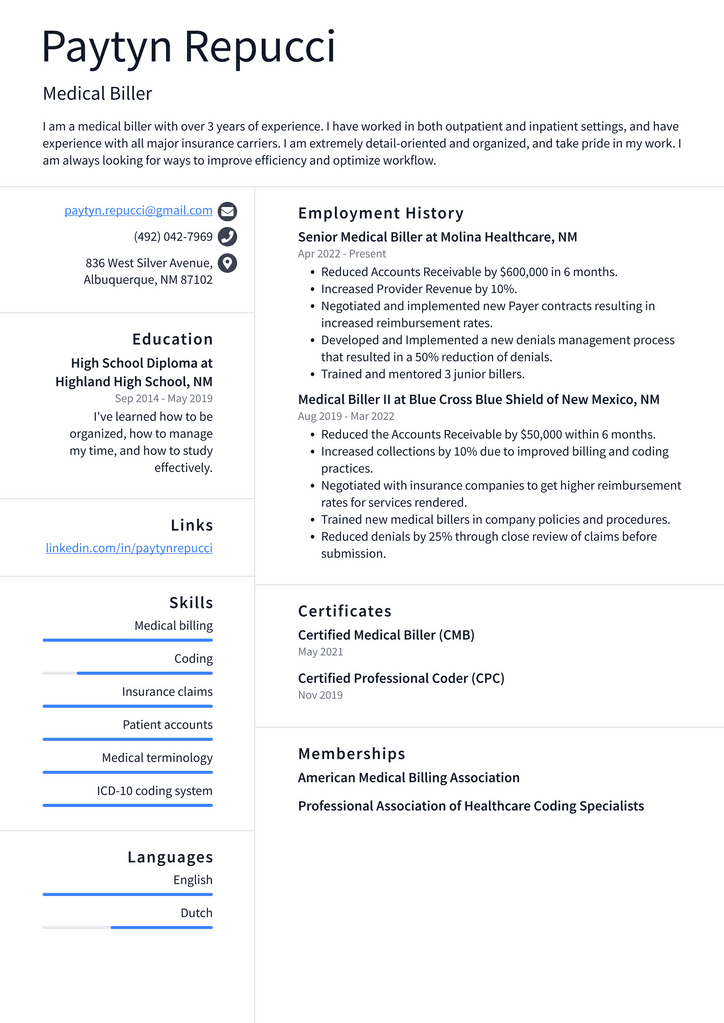
Download This Medical Biller Resume as PDF
Medical Office Manager Resume Example
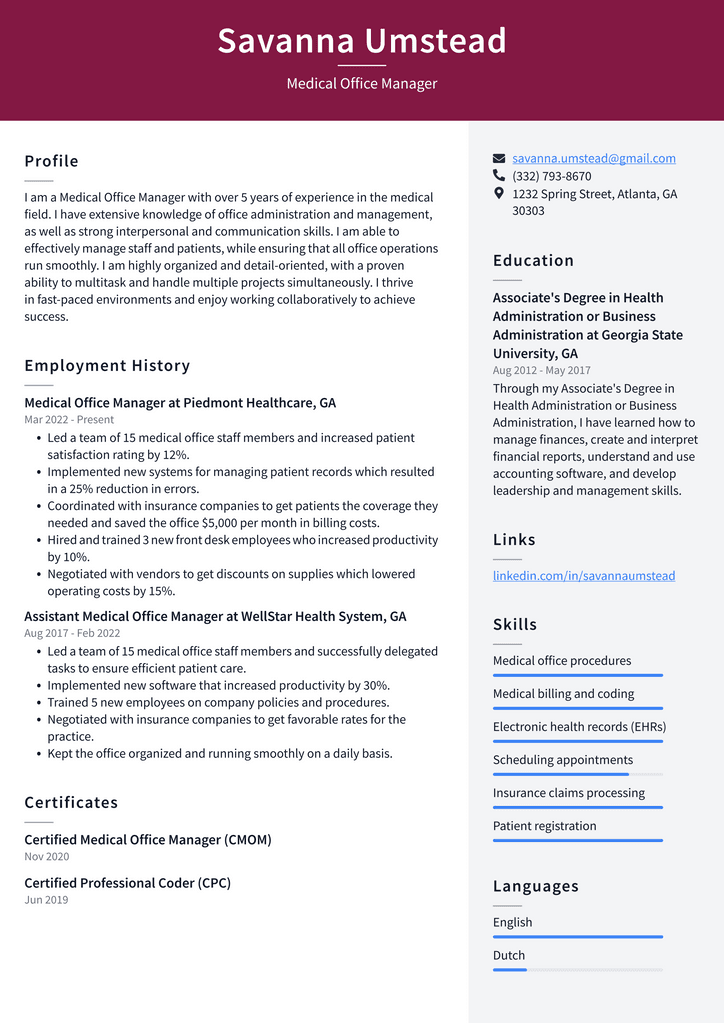
Download This Medical Office Manager Resume as PDF
Medical Transcriptionist Resume Example
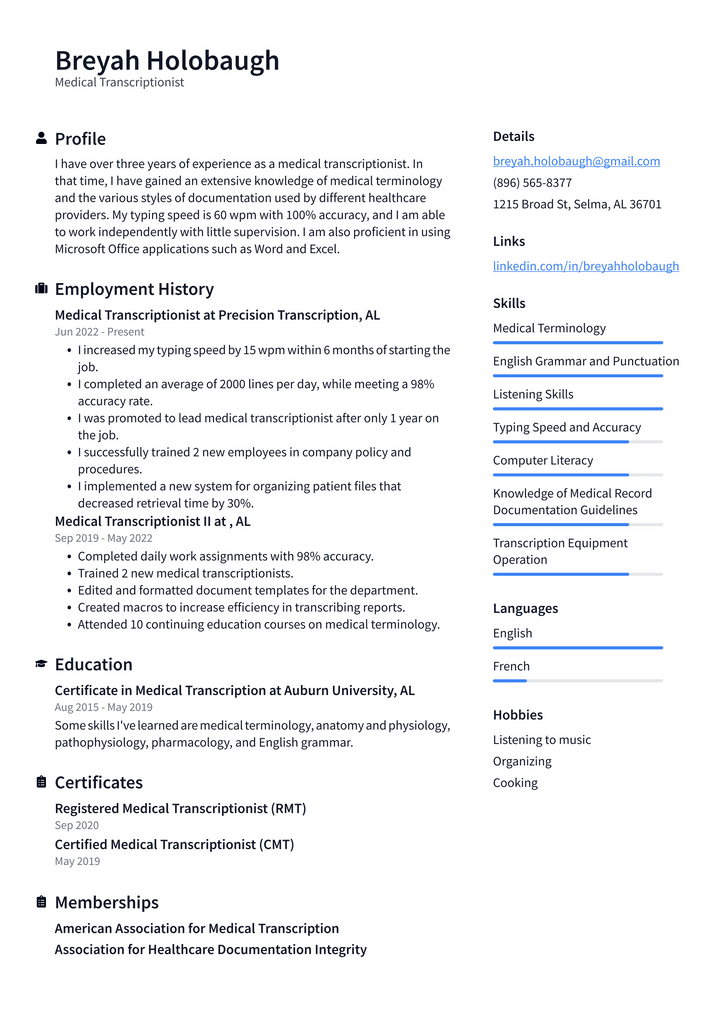
Download This Medical Transcriptionist Resume as PDF
Medical Coder Resume Example
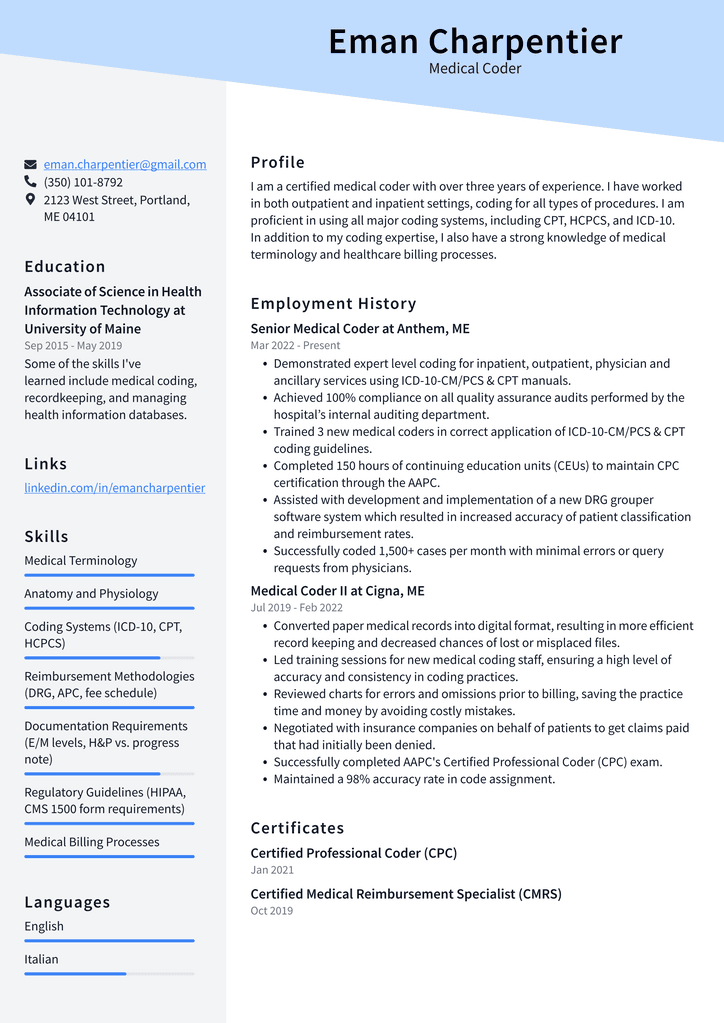
Download This Medical Coder Resume as PDF
Medical Assistant Resume Example
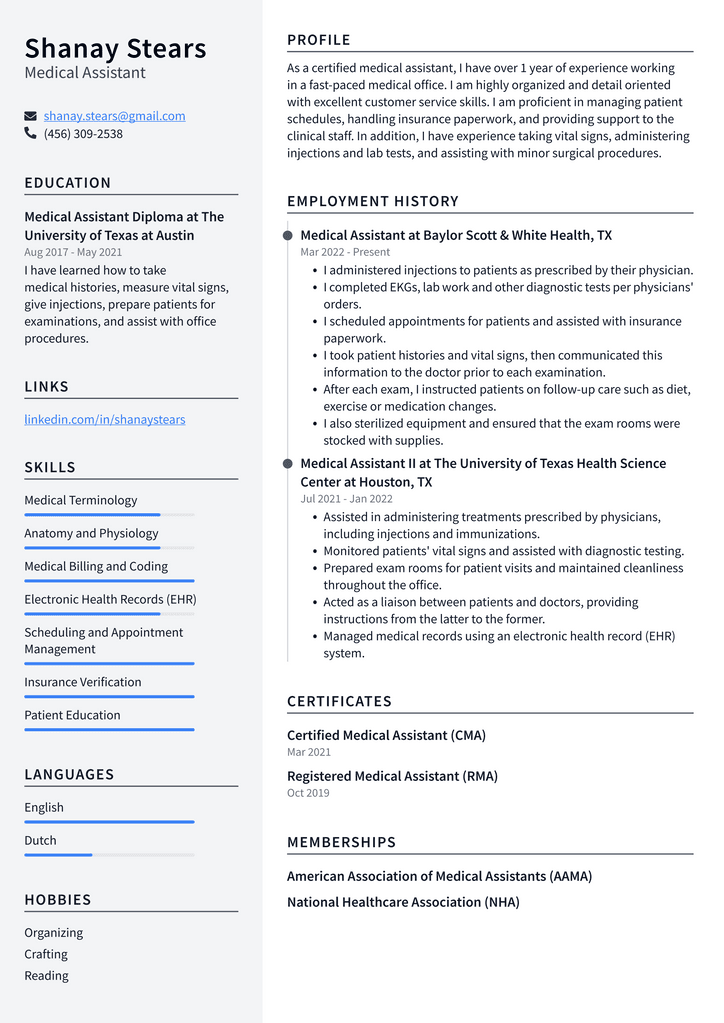
Download This Medical Assistant Resume as PDF
What To Include In Your Resume
There are many elements to consider when writing a resume for a medical receptionist position. Here are some of the most important sections you’ll want to include: – Education – This section should include information about your current or previous education, including any certifications or degrees you may have earned. – Experience – Your work experience should be listed chronologically and include the name of each company you worked for, the position you held, the duration of your employment, and your responsibilities. – Skills – This section is where you’ll want to highlight any specific skills or abilities relevant to the medical receptionist position. – Additional sections – Depending on your specific experience, you may also want to include a special skills section or section on relevant volunteer work. – Cover letter – A cover letter is optional and can be included at the beginning or end of your resume. It should include your current contact information, a summary of your skills and experience, and why you’re interested in the specific job.
Tips for Writing a resume as a medical receptionist
– Choose the correct resume format. There are several formats for resumes, including chronological, functional, and hybrid. A chronological resume format is the most common and is typically best for recent graduates. A functional resume format is typically used by people with gaps in their employment history or who want to focus on specific skills. Finally, a hybrid format combines the best elements of chronological and functional resumes. – Make sure your resume is error-free. This includes fixing typos, correcting formatting issues, and removing unnecessary information. While it may seem unnecessary, making sure your resume is error-free is essential because hiring managers will likely spend very little time looking at your application if they find even one flaw. – Tailor your resume to each job opportunity. Although you can use a standard resume format, each resume should be tailored to the specific job opportunity. You can do this by including the skills and experience relevant to the job and omitting information that isn’t relevant. – Don’t lie on your resume. While it may seem tempting to inflate your experience or education, this will almost certainly backfire and result in a swift termination once your employer discovers the truth. – Schedule time to revise your resume. Once you’ve created your first draft, you should schedule a time to revise it as you gain more experience and acquire new skills.
Medical Receptionist Job Description
A medical receptionist works in various health care settings, such as in a hospital or medical office, to answer incoming calls, schedule appointments, and direct visitors. The medical receptionist’s job description includes:
- Greeting patients when they arrive for appointments.
- Keeping track of patient information and payment.
- Other administrative tasks.
It’s important to note that this position is not a substitute for a medical assistant. Therefore, before applying for a position as a medical receptionist, it’s essential to understand the job description. Doing so will allow you to create a resume highlighting your relevant skills and experience. While the job description will vary slightly by the employer, it typically includes the following responsibilities: – Answering incoming calls – You’ll likely be the first person a patient speaks with when calling the office, so you’ll need to be friendly and prepared to handle a wide variety of questions and concerns. – Scheduling patient appointments – You’ll be responsible for scheduling appointments for patients and other visitors and keeping track of the office schedule to ensure nobody is left waiting. – Greeting patients – When patients arrive for appointments, you’ll be responsible for greeting them and ensuring they know where to go. – Patient payment and insurance information – You’ll be responsible for collecting patient payments and keeping track of insurance information. – Other administrative tasks – You may also be responsible for ordering supplies, managing patient records, and other administrative tasks.
How to Find the Right Company to Work for You
The first step in applying for medical receptionist jobs is creating a fantastic resume. You also need to decide which companies you want to use, which can be challenging if you apply for positions in a specific industry. To narrow down prospective employers, it’s important to research which companies are hiring, what benefits they offer, and the average salary for your position. Fortunately, various resources are available to help you with this process. – Job boards – One of the most popular ways to find jobs is to use a job board. Several general job boards accept applications from any industry, and dozens of job boards specific to various industries. – Company websites – Many companies also post job openings on their websites, making it easy for you to find opportunities. – Career fairs are an excellent way to meet hiring managers face-to-face and show them why you’re the right candidate for the job. – Networking – Another great way to find job openings is to network with people in your industry, including friends, family, and former co-workers. – Online forums – Finally, you can also use online forums to find job openings, whether specific to your industry or not.
Conclusion
A medical receptionist job is a great way to break into the health care field and begin your career. To land this position, you’ll need to create an impressive resume highlighting your relevant skills and experience. To do this, you’ll want first to understand the job description and carefully research prospective employers. Next, you’ll need to create a killer resume that communicates your experience and skills. Whether you’re applying for a medical receptionist job as a new graduate or a veteran in the industry, following these tips will help you create a resume that gets noticed.